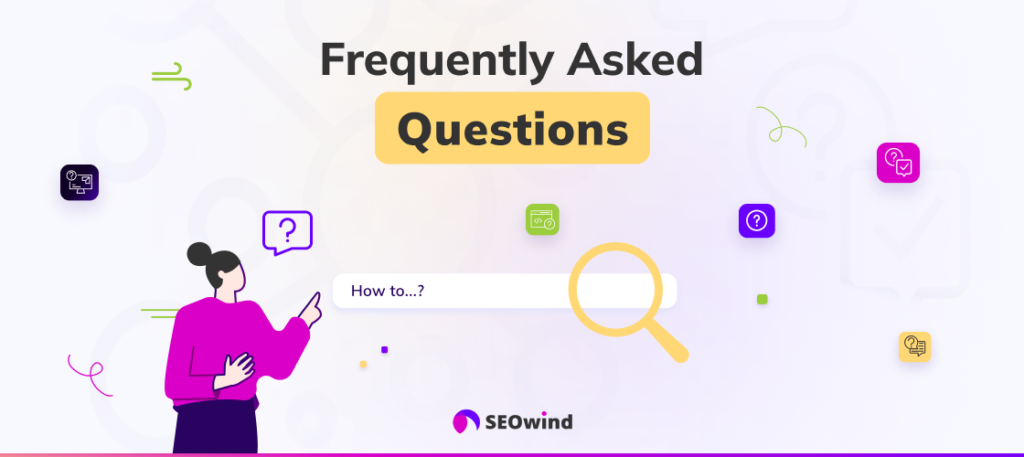The world of writing has been revolutionized by the rapid advancements in Artificial Intelligence (AI). Gone are the days when effective content writing hinged solely on an individual’s talent, knowledge, and creativity. AI now offers transformative solutions to enhance your writing skills while simplifying time-consuming tasks. Allow me to guide you through this cutting-edge realm where human ingenuity partners with machine intelligence to bring your writing to new heights.
Introduction to AI-Enhanced Writing
AI-enhanced writing refers to harnessing the power of artificial intelligence algorithms and linguistic analysis tools to improve written communication. The underlying principle lies in simulating the cognitive processes that govern human language understanding and expression, thus enabling machines to suggest improvements in style, grammar, structure, tone, and context without disrupting individualistic voice or creative flair.
While this technology continues advancing at a dizzying pace, it already presents writers with numerous innovative ways to elevate their craft, owing to its ability to assist and inspire. Join me as we delve deeper into how AI can transform your writing process into one effortlessly refined yet ingeniously unique masterpiece after another!
What is it about AI that makes your writing better?
Artificial intelligence (AI) has been making significant advancements in recent years, and we already see its influence across various industries. When it comes to enhancing your writing with the help of AI, you might wonder what exactly this technology is that improves the quality and efficiency of your written content.
An AI-powered writing assistant is a sophisticated software program that leverages machine learning algorithms and natural language processing techniques to provide real-time guidance, style suggestions, and analysis for your content writing. These tools work by understanding text documents’ context, structure, and style and identifying patterns or errors to correct or improve them.
Several key components make an AI-driven writing tool effective:
- Natural Language Processing (NLP): NLP allows computers to understand, interpret, and generate human language. By utilizing NLP models, AI writing assistants can comprehend text input, detect spelling or grammar issues, identify inconsistencies in tone/style, offer synonyms for word replacements, and analyze sentiment.
- Machine Learning Algorithms: Powered by large datasets collected from numerous sources such as books, articles, social media platforms, or websites, these advanced algorithms enable AI writing tools to learn continuously about language usage patterns and make predictions for improved suggestions over time.
- Pre-trained Language Models: To lay a solid foundation for processing textual data efficiently and accurately, use pre-trained language models like GPT-3 (Generative Pre-trained Transformer 3) or BERT (Bidirectional Encoder Representations from Transformers). These state-of-the-art models often form the basis for many AI applications explicitly designed to enhance one’s writing skills.
Incorporating these elements into AI-assisted software programs enables not only to refine syntax but also to drive creativity and innovation through suggestion generation when composing texts across different genres – be it academic assignments, blog posts, or professional email correspondence. By leveraging AI’s power, you can elevate your writing abilities and unlock new possibilities in terms of speed, efficiency, and more high-quality content.
Benefits of AI in Writing

As someone who wants to enhance their writing with AI, it’s essential to understand the potential benefits that these advanced tools can bring. In this section, I will cover three significant advantages: Improved quality and efficiency, increased creativity and innovation, and automated editing and proofreading.
Improved Quality and Efficiency
AI-powered writing assistants can significantly improve your work’s quality and overall efficiency as a writer. By leveraging advanced algorithms and natural language processing techniques, they can:
- Identify common grammar mistakes that may be difficult for human writers to detect.
- Ensure consistent usage of specific terms or phrases throughout a document.
- Suggest improvements by evaluating sentence structure, word choice, and readability.
- Reduce the time spent on repetitive tasks like formatting or inserting references.
By utilizing AI tools to assist you in these areas, you’ll have more time to focus on crafting engaging content and ensuring high-quality output.
Increased Creativity and Innovation
One fascinating aspect of using AI to help you write is its ability to generate innovative ideas that spark new creative possibilities. Here are some ways an AI-powered writing assistant might aid you in discovering unique angles:
- Analyze prevailing trends in specific industries or niches to help identify popular topics or emerging themes worth exploring.
- Generate recommendations based on keywords, providing fresh perspectives on existing subject matter.
- Offer style suggestions for different opening sentences or conclusions that breathe new life into an article concept.
Artificial intelligence allows writers like us to discover untapped creative potential while staying relevant within our chosen fields.
Automated Editing and Proofreading
Developing meaningful content is more than just about forming coherent sentences – we must present well-proofed material without grammatical errors that could undermine our credibility. With AI-powered editing tools at your disposal:
- Save valuable time by automatically detecting and rectifying spelling, punctuation, or grammar mistakes that can slip past manual proofreading.
- Obtain real-time feedback on your writing’s readability, suggesting necessary modifications to make it more accessible to readers with varying skill levels.
- Enhance accuracy by identifying any language usage or formatting inconsistencies within a document.
Relying on AI tools for editing and proofreading helps maintain high writing standards, and write faster while freeing up time for more critical activities like research, idea generation, or refining your overall structure.
Ways to use AI to improve your own writing
Artificial intelligence offers many opportunities for writers to enhance their skills and produce better results. They can support you with writing various content formats like blog posts, product descriptions, social media posts, or Google ads.
Here are practical ways you can leverage AI technology to elevate your writing:
Alternative to professional training
While investing in professional training is valuable, it can be expensive and time-consuming. An AI-powered writing assistant (grammar checker) offers an affordable and accessible alternative by identifying grammatical errors, suggesting better word choices, and providing feedback on readability. As you iterate with the assistance of these tools, it becomes easier for you to adapt your writing style, ultimately enhancing the quality of your work.
Generate ideas for blog content that is trending in your niche.
Staying relevant in any industry requires keeping pace with the latest trends and developments. AI tools can analyze social media conversations, mine popular search queries on search engines, and extract insights from extensive data sets relevant to specific niches. Using these applications, you can identify emerging trends or hot topics within your niche, which inspire fresh content that will resonate with your audience.
Conduct content research
One of the significant ways to use AI to improve your own writing is by employing AI-powered tools to conduct in-depth content research.
The research phase is crucial for generating high-quality and well-informed content, as it helps you gather extensive knowledge and insights about a given topic. AI-based platforms, such as SEOwind, can assist you in exploring and identifying relevant sources, data, and statistics that can enrich your writing. These tools can also help you discover the most popular questions and keywords related to your topic, allowing you to address the primary concerns of your target audience. By leveraging AI capabilities for content research, you can enhance your content writing, by presenting well-researched information, backed by credible sources, which can ultimately increase your content’s reliability and authority.
More Resources on content research
- The ABCs of SERP Keywords
- How to do SEO Keyword Research
- Discover the Best Keyword Research Tools of 2023
- How to Do Keyword Research in minutes – Practical Tips
Write comprehensive outlines based on data
Another way AI can aid in improving your writing is through the creation of comprehensive outlines. Outlining is a vital step in the writing process, as it helps you to structure your content logically and coherently. AI-powered tools, such as SEOwind, can help you develop a structure for your blog post or article. It comes up with a comprehensive outline based on an in-depth SERP analysis.
Write better introductions and conclusions
Crafting compelling beginnings and ends is critical since they set the tone for your content. AI algorithms can analyze successful text structures from top-performing articles across various domains. They then suggest crafting an engaging introduction or conclusion based on this analysis. This enhances not only the structure but also increases relevance while maintaining the reader’s interest throughout.
Write comprehensive AI articles and blog posts
There are already AI tools such as SEOwind that are able to write full AI articles. They are long-form content, with relevant structure nailing the search intent.
It starts with creating a clear and comprehensive outline. This way you can ensure that the AI-generated content aligns with your vision and ideas, saving you time and effort in the content creation process. Moreover, utilizing these AI technologies can also help you overcome writer’s block and inspire new ideas for your writing.
Find inconsistencies in your text
Inconsistencies in narrative voice, character development, or plot details can significantly impact reader engagement. It can confuse or distract from critical key points in a given writing piece. A highly qualified AI-powered editing software can recognize discrepancies within your text related not only to those elements mentioned earlier but also to issues of formatting conventionality, such as headline consistency and spacing. By detecting these issues early on, you can address them swiftly, improving your readers’ clarity.
Ask AI for feedback on your writing
Receiving constructive feedback is essential for refining your craft as a writer. Some AI tools can offer personalized suggestions based not just on rules of grammar but also on the context and audience of your work. By implementing machine learning algorithms, these tools continue to improve their understanding of user preference, thereby progressively supplying increasingly accurate recommendations. In this way, constant interaction with such applications allows for incremental improvement in one’s writing style, which translates into greater success in achieving desired outcomes like increased reader engagement or more effective communication across diverse audiences.
Plagiarism Checker
These AI-powered tools are specifically designed to detect similarities and duplicated content between your writing and other sources on the internet. By using a plagiarism checker, you can ensure that your work is completely original and free from unintentional plagiarism. This not only protects you from potential copyright issues but also enhances the credibility of your writing. Furthermore, these tools can help you identify weak areas in your writing that may need further development or paraphrasing, leading to a better-quality AI output.
Best Practices for Using AI Writing Tools

Understand the Limitations of AI Writing Tools
To fully enhance your writing with AI, it’s essential to understand the limitations of these tools. Though numerous advanced models are continually being developed, they are far from perfect. Here are some critical points to keep in mind:
- AI-generated suggestions and ideas may only sometimes align perfectly with the context or human intent.
- Grammar and syntax recommendations by AI may occasionally be incorrect or too rigid.
- Language ambiguities can confuse the algorithms resulting in less-than-optimal suggestions.
Recognizing these limitations will allow you to use AI writing tools more effectively and avoid blindly accepting all of their suggestions.
Set Clear Goals for Your Writing Project
Before embarking on any writing project that involves using an AI-powered writing assistant, it is crucial to define what specific objectives you wish to achieve. Establishing clear goals will help guide your interaction with these tools efficiently. To set your goals, consider the following questions:
- What type of content am I creating? (e.g., blog post, research paper)
- Who is my target audience?
- What tone do I want to convey? (e.g., formal, conversational)
By having a blueprint for your project, you can easier fine-tune how the tool supports you during the process.
Choose the Right Tool for Your Project
Numerous AI writing tools are available in the market catering to different needs – from grammar checkers like Grammarly and ProWritingAid to content generators such as Quill. Choosing a suitable tool is vital for ensuring optimal results. Ensure its functionality aligns with your project requirements before integrating it into your workflow.
For instance, if improving grammar and readability is a primary concern, selecting a reliable linguistic tool would yield favorable outcomes; similarly, when seeking diverse content ideas or coping with writer’s block while drafting large volumes of text, a content generator might better serve you.
Use AI to Supplement Your Writing Process
One vital aspect to remember when using AI writing tools is their role as a support system, working with your unique creativity and expertise. These tools should not replace your authorship but enhance it by offering suggestions, perfecting grammar, uncovering distinct ideas, or providing initial drafts for long-form texts. Maintain ownership of your work by:
- Utilizing AI-suggested improvements strategically.
- Refining the language produced by these tools.
- Personalizing generated content so that it aligns with your authentic voice.
By incorporating AI as an assistant, you’ll maximize its potential while retaining the essence of your writing.
Be Open to New Ideas Generated by AI
Much like brainstorming with a colleague who brings diverse perspectives to stimulate innovation, collaborating with an AI-powered writing assistant offers opportunities for exploring fresh ideas. Many models today rely on large datasets capable of producing numerous unique insights; being receptive to such information can lead to increased creativity and inspiration within your work.
However, critical thinking remains essential in discerning which suggestions are valuable based on context. Harness this collaborative process effectively by balancing openness towards novelty without sacrificing pragmatism and relevance in meeting project objectives.
Common Pitfalls to Avoid When Using AI Writing Assistant

Relying Too Much on Automation
While AI writing tools can significantly enhance your writing with AI, it’s crucial to avoid over-relying on automation. Excessive dependence on AI may make you complacent, overlook critical aspects of your work, and miss out on opportunities for growth in your writing.
- Maintain a balance between human intervention and automated processes.
- Regularly review and revise generated outputs rather than blindly accepting them.
- Maintain a sense of responsibility for your work by actively participating in the entire process.
Remember that while AI is designed to support your efforts, it should not completely replace the human touch in crafting compelling content.
Not Taking Advantage of Human Expertise
AI-powered writing assistants are great when used strategically alongside human insights. However, you must recognize that algorithms cannot wholly replicate the power of human intuition and creativity.
To make the most of both worlds:
- Collaborate with fellow writers or colleagues to bring fresh perspectives and ideas to your content.
- Seek guidance from mentors or online writing communities for constant learning and improvement.
- Apply human emotions like empathy and curiosity when creating engaging stories or connecting with readers.
Ignoring this valuable resource might mean missing out on unique touches only humans can provide—something essential for truly captivating an audience.
Failing to Understand the Limitations of AI Writing Tool
Though AI technology has rapidly improved, it still needs improvement. Acknowledging its limitations empowers you to use these tools wisely. Here are some common issues that arise with AI writing assistance:
- Grammar correctness: While some inaccuracies can be detected using these platforms (think subject-verb agreement), more nuanced mistakes still require manual inspection.
- Tone inconsistency: The language generated by an algorithm might not always match the desired tone—garnering negative results if left unattended.
- Plagiarism and legal concerns: Some AI writing tools may inadvertently create content that’s too similar to existing work, possibly leading to copyright issues.
Be aware of these constraints when using AI for writing:
- Develop a clear understanding of the AI tool in question and its unique flaws.
- Regularly update yourself on advancements and upgrades for enhanced functionality.
- Recognize that combining human editing and AI-powered writing assistance will yield the best results.
By avoiding these pitfalls, you’ll be one step closer to effectively utilizing AI-assisted tools while maintaining your creative identity within your work.
AI Writing Tools

AI writing assistants come in various forms: from free Chrome extension to online paid AI tools. Below we will just go through the ones that focus on proofreading and improving your own copywriting.
Grammarly
Grammarly is an AI-powered writing assistant that helps writers enhance their writing by providing suggestions for grammar, punctuation, and style in real time. With its advanced algorithms and natural language processing capabilities, Grammarly allows users to:
- Catch common spelling and grammar mistakes
- Ensure proper use of tense and subject-verb agreement
- Identify repetitive words or phrases, thus improving sentence variety
- Optimize word choice with this tool’s synonym suggestion feature
Moreover, Grammarly offers full access to a browser extension that seamlessly integrates with various platforms like Google Docs, Microsoft Word, and email clients. The premium version also includes plagiarism detection and more advanced style recommendations.
ProWritingAid
Another powerful AI writing tool is ProWritingAid, which provides extensive feedback on various aspects of your writing – from basic spelling checks to readability analysis. This comprehensive software enables you to:
- Analyze the language used in your content for clarity and coherence.
- Receive suggestions on transitions, sentence length variation, overused words, passive voice usage, and adverb placement.
- Improve your text based on targeted recommendations tailored to specific document types (e.g., academic essays, blog posts)
Aside from highlighting potential issues in the text, ProWritingAid contains contextual information explaining why the suggestion was made – making it a valuable learning resource for writers aiming to refine their skills.
QuillBot
QuillBot is a market-leading writing assistance tool that helps users adjust and paraphrase their own writing. By copying your work into the application, you rapidly obtain rephrasing suggestions.
It also works as an extension for Microsoft Word, Chrome, and Google Docs. The tool identifies opportunities to use synonyms, helps to track and properly source citations, and even generates article summaries.
As AI technology advances rapidly, these writing tools exemplify its potential to enhance written communication. Experimenting with these applications will help you streamline the writing process and foster creativity and skill advancement – paving the way toward becoming a more effective writer overall.
💡 Interested in AI Wiritng Tools? Go to our comprehensive article on AI Content Writing Tools – The Best of 2023
Frequently Asked Questions on how to enhance your writing with AI

What are the Benefits of Using AI for Writing?
Utilizing AI-powered writing assistants can bring multiple benefits, including:
- Enhanced writing quality and efficiency: AI tools help detect errors and suggest improvements in grammar, punctuation, clarity, and style.
- Boosted creativity and innovation: These applications stimulate new ideas by offering suggestions or generating content on a topic.
- Automated editing and proofreading: AI-driven services save time by identifying and rectifying errors autonomously.
- Providing alternative professional training: They serve as a resource to improve your writing skills without needing classes or workshops.
- Analyzing successful content trends within your niche: AI tools can identify relevant keywords and topics in your industry by analyzing top-performing articles.
How Can I Get Started with AI Writing Tools?
To get started with AI writing tools, follow these simple steps:
- Research available platforms.
- Choose an AI writing tool based on factors like functionality, user interface, pricing structure, compatibility with other software applications you use (MS Word or Google Docs), etc.
- Sign up for an account or subscription plan according to your needs and preferences (free programs usually have limited features compared to premium ones).
- Proceed through the setup process — linking it to your preferred word-processing application or browser extension if necessary.
- Begin using the program by submitting text for analysis; many tools offer real-time suggestions as you write.
It’s worth noting that the learning curve associated with each tool may vary — spend some time getting used to its specific functionality before fully integrating it into your workflow.
What Are the Best Practices for Using AI Writing Tools?
To make the most of your chosen AI writing assistant, ensure you adhere to these best practices:
- Understand the limitations of the technology – while impressive developments have been made in recent years, no AI system can fully replicate a human’s creative writing process or intuition.
- Set clear goals for your project – outlining specific outcomes and objectives will aid in selecting appropriate tools, thus improving the final content.
- Choose the right tool for each writing assignment – consider factors like subject matter expertise, formatting requirements, target audience, etc., to determine which platform best serves you.
- Use AI as a supplement rather than a replacement for your writing process – remember, these applications should serve as support to improve the quality and effectiveness of your work by offering suggestions.
- Be open to new ideas generated by AI – while staying true to your original intention is essential; considering different perspectives may open up exciting directions and contribute positively to your finished piece.
Additional Resources
To further enhance your writing with AI and expand your knowledge on this topic, there are various additional resources available that can be highly beneficial. In this section, I will introduce you to a few online resources, educational platforms, and communities to help deepen your understanding of AI-assisted writing:
- Google’s Machine Learning Crash Course: To better understand the technology behind AI writing tools, Google’s MLCC is an excellent starting point. This free course covers artificial intelligence and machine learning in-depth but is designed for beginners.
- OpenAI: As one of the leading organizations in developing state-of-the-art AI models like GPT-3, OpenAI’s website offers relevant publications and research papers that can provide extensive insight into artificial intelligence.
- Medium: Medium contains numerous articles from experts specializing in AI applications for writing and tips & tricks to capitalize on these powerful tools most effectively.
- Reddit: Subreddits such as r/MachineLearning or r/artificial offer content shared by professionals and enthusiasts alike about advancements in machine learning and artificial intelligence. Also, subreddit communities like r/writingadvice or r/blogging often discuss using AI tools alongside personal experiences that may apply to your needs.
- Coursera and edX: These popular online learning platforms often offer courses covering wide-ranging subjects related to artificial intelligence, including natural language processing (NLP). By enrolling in courses like these, you’ll better understand the technology driving today’s advanced AI writing assistants.
Exploring these additional resources will give you an edge over those who aren’t taking advantage of AI-enhanced writing tools and provide a wealth of information on machine learning-related technologies actively shaping our future. Time invested in expanding your knowledge about how AI improves the craft of writing will undoubtedly pay off when utilizing these tools more efficiently to streamline your writing process and produce amazing content.



